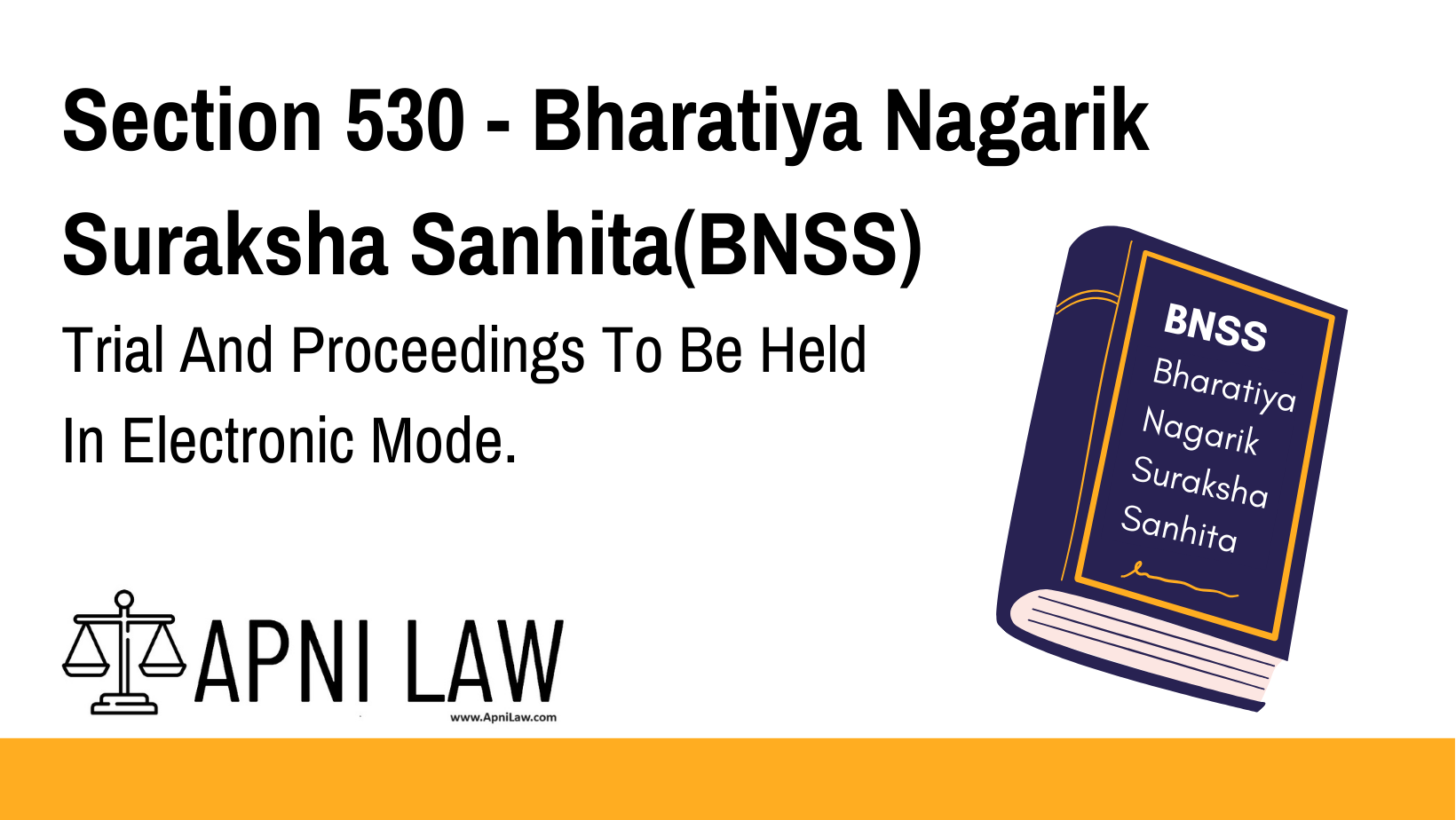Code: Section 530 BNSS
All trials, inquires and proceedings under this Sanhita, including—
(i) issuance, service and execution of summons and warrant;
(ii) examination of complainant and witnesses;
(iii) recording of evidence in inquiries and trials; and
(iv) all appellate proceedings or any other proceeding,
may be held in electronic mode, by use of electronic communication or use of audio-video
electronic means.
Explanation of Section 530 BNSS
Section 530 of the Bharatiya Nagarik Suraksha Sanhita (BNSS) enables electronic proceedings in criminal trials. It allows for the use of technology to carry out various judicial activities, making the process more efficient and accessible. The provision is aimed at modernizing the judicial system, making it more flexible and adaptable to contemporary needs.
Key Provisions:
- Electronic Mode: All major judicial processes, including the issuance of summons, the examination of witnesses, and the recording of evidence, can now be conducted electronically.
- Audio-Video Communication: Audio-video means can be used to conduct proceedings, making it easier for people to participate remotely, reducing delays and increasing efficiency.
- Efficiency and Accessibility: This method improves the accessibility of the legal system, particularly for those who cannot attend court in person.
Illustration
Example 1: Virtual Trial
A witness from a different state can testify in a trial through an audio-video conference. The court will record their testimony electronically without requiring their physical presence in the courtroom.
Example 2: Electronic Service of Summons
If the court issues a summons, it can be sent electronically to the concerned party instead of physically delivering it. The party can acknowledge receipt through email or video confirmation.
Common Questions and Answers on Section 530 BNSS
1. How does electronic mode help in legal proceedings?
- Answer: Electronic mode speeds up the legal process by eliminating geographical barriers and reducing delays. It also makes proceedings more accessible and convenient for all parties involved.
2. Can all cases be conducted in electronic mode?
- Answer: Yes, Section 530 allows trials, inquiries, evidence recording, and appellate proceedings to be conducted electronically unless specified otherwise by the court.
3. How does electronic communication affect witness testimonies?
- Answer: Witnesses can give their testimonies remotely via video calls, eliminating the need to be physically present in court and ensuring that their statements are recorded properly.
Conclusion
Section 530 BNSS introduces electronic mode for legal proceedings, enhancing efficiency and accessibility. The use of audio-video means in trials, evidence collection, and other judicial functions ensures the justice system adapts to modern technological standards.








